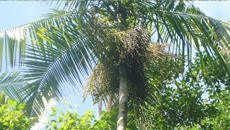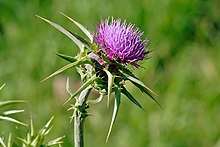Source: University of Chicago Medical Center
Summary:
A natural compound from magnolia bark can protect the heart from hypertrophy by activating SIRT3, a protein associated with delayed aging, stress resistance and metabolic regulation. Injected honokiol protected stressed mice, preventing excess growth of cardiac muscle cells and fibrosis.
Honokiol, by increasing SIRT3 levels, effectively blocked both the induction and progression of cardiac hypertrophy in mice.
Credit: Mahesh Gupta, Ph.D., director of the Cardiac Cell Biology Research Program at the University of Chicago
A natural compound derived from the bark of the magnolia tree, can protect the heart from hypertrophy, a thickening of cardiac muscle often caused by chronic high blood pressure that can lead to heart failure, researchers report in the April 14 issue of the online journal Nature Communications.
When injected into mice, honokiol (hoh-NOH'-kee-ohl) reduced the excess growth of individual cardiac muscle cells, decreased ventricular wall thickness and prevented the accumulation of interstitial fibrosis, a stiffening of cardiac muscle cells that reduces their ability to contract. It also protected heart muscle cells from the damage caused by oxidative stress, which can damage DNA.
The researchers, based at the University of Chicago Medicine, also describe how this ancient remedy, widely used in Asia for centuries, protects the heart. They found the compound activates SIRT3, a protective protein associated with delayed aging, stress resistance and metabolic regulation.
"Honokiol, by increasing SIRT3 levels, effectively blocked both the induction and progression of cardiac hypertrophy in mice," said study author Mahesh Gupta, PhD, director of the Cardiac Cell Biology Research Program at the University of Chicago. "It even mitigated pre-existing cardiac hypertrophy. This has the potential to play a significant role in the prevention and treatment of heart failure."
"To the best of our knowledge, this is the first report to describe a pharmacologic activator of SIRT3" he added. "Until now, caloric restriction combined with endurance exercise has been the only way to boost SIRT3 levels. Very few people have been able to follow such a rigorous regimen."
One of a family of sirtuin proteins, SIRT3 is primarily active in the mitochondria, the cell's main source of energy. It plays a central role there in energy metabolism and in preventing acetylation, a process that can alter the function of proteins. In the absence of SIRT3, mitochondrial proteins become hyperacetylated, which can impair function.
Human studies show that sedentary patients over 60 years old have nearly 40 percent less SIRT3. Mice that lack the gene for SIRT3 have 40 percent lower levels of ATP, a primary source of energy, than those with the gene.
The researchers tested multiple compounds in search of one that could activate SIRT3. They found that honokiol reduced mitochondrial protein acetylation. When they tested it in the heart muscle cells from mice, they found that a small amount of honokiol nearly doubled SIRT3 levels within 24 hours.
Additional studies showed that honokiol, acting through SIRT3, could reduce or prevent hypertrophic growth in cardiac muscle cells, prevent mice from developing full blown hypertrophy and even reduce existing damage from established hypertrophy.
It also blocked the production of fibroblasts -- cells that interfere with heart muscle performance -- and reduced production of myofibroblasts, cells that speed wound healing but can impair heart function. The researchers did not detect any appreciable toxicity.
To confirm the mechanism, the researchers performed the same experiments on mice that lacked the SIRT3 gene. In those studies, honokiol had no effect.
They also determined that honokiol binds directly to SIRT3. The combination appears to increase SIRT3's activity.
The results, the authors wrote, suggest pharmacological activation of SIRT3 by honokiol could be "a potential therapeutic strategy to prevent adverse cardiac remodeling and other diseases associated with abnormal cellular growth and organ fibrosis."
"Although we feel this is extremely promising," Gupta said, "there is still much work to be done."
Honokiol is available as an herbal remedy but the purity of such preparations is undetermined. "We treated the mice with injections into the peritoneal cavity," Gupta emphasized, "rather than by mouth, which is how this compound has traditionally been administered. We are testing to see if oral use will have a similar effect."
Despite those caveats, "we are tremendously excited," Gupta said. "We are working to design a clinical trial involving patients with cardiac hypertrophy and potentially other metabolic diseases, such as type 2 diabetes."
Story Source:
Journal Reference:
Vinodkumar B. Pillai, Sadhana Samant, Nagalingam R. Sundaresan, Hariharasundaram Raghuraman, Gene Kim, Michael Y. Bonner, Jack L. Arbiser, Douglas I. Walker, Dean P. Jones, David Gius, Mahesh P. Gupta. Honokiol blocks and reverses cardiac hypertrophy in mice by activating mitochondrial Sirt3. Nature Communications, 2015; 6: 6656 DOI:
10.1038/ncomms7656
Cite This Page:












